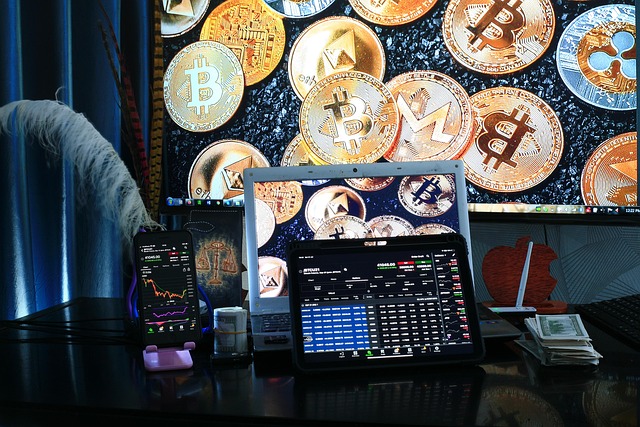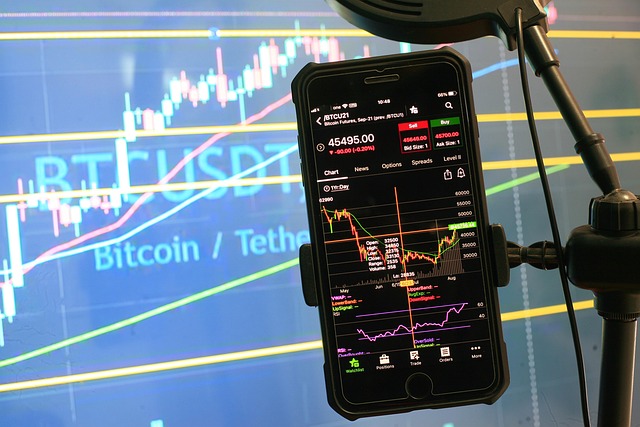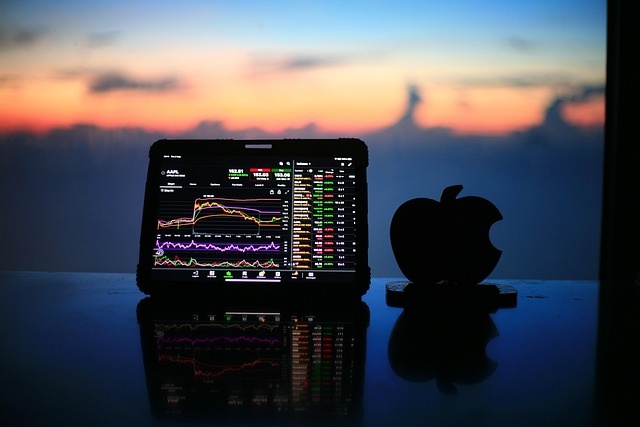Mastering the Bitcoin Trading Process: Step-by-Step Guide
Author: Jameson Richman Expert
Published On: 2025-11-07
Prepared by Jameson Richman and our team of experts with over a decade of experience in cryptocurrency and digital asset analysis. Learn more about us.
The bitcoin trading process can seem complex for newcomers and even for experienced traders refining their approach. This article breaks down every stage — from choosing an exchange and setting up accounts through order execution, risk management, and tax reporting — to give you a practical, SEO-friendly roadmap for consistent, informed trading. You’ll find step-by-step instructions, trade examples, strategy ideas, recommended tools, and authoritative resources to help you trade Bitcoin more confidently and safely.

What is the Bitcoin Trading Process?
The bitcoin trading process is the sequence of activities traders follow to buy, sell, and manage Bitcoin positions in pursuit of profit or hedging. It includes preparation (education, account setup, and funding), market analysis (technical and fundamental), order execution (market, limit, stop), position management (stop-loss, take-profit, sizing), and post-trade tasks (recordkeeping and tax reporting). Effective traders treat this process as a repeatable system rather than ad-hoc decisions.
Why a Structured Process Matters
- Reduces emotional mistakes: predefined rules combat fear and greed.
- Improves consistency: repeatable steps build better outcomes over time.
- Facilitates learning: a documented workflow helps you analyze what works.
- Risk control: position sizing and stop rules limit catastrophic losses.
Overview: Key Stages of the Bitcoin Trading Process
- Education & research
- Choosing an exchange and account setup
- Funding and wallet management
- Market analysis and strategy selection
- Placing and managing orders
- Risk management and psychology
- Recordkeeping and tax compliance
- Review and optimization

1. Education & Research: Build a Strong Foundation
Before placing your first trade, invest time learning how Bitcoin works, market structure, and trading basics. Reliable sources include the Bitcoin Wikipedia page for fundamentals and Investopedia for trading concepts.
- Understand blockchain basics: see the Bitcoin Wikipedia page.
- Learn order types (market, limit, stop, trailing stop) and leverage mechanics.
- Read about price drivers: demand, macro events, regulatory news, on-chain metrics.
Further reading on specialized topics
- Futures and margin trading: this guide explains crypto futures meaning and mechanics in detail — useful if you plan to trade derivatives: Crypto Futures Trading Meaning — 2025 Guide.
- Fixing technical tool issues: if you rely on TradingView alerts, this troubleshooting guide can be helpful: Fixing TradingView Alerts Not Working — Complete Guide.
- Broader market context: consider analyses of other digital assets such as XRP to understand correlation risks: How Much Is XRP Projected to Be Worth — 2025 Forecasts.
- Choosing a trading app: if platform usability matters, review comparative guides like this one: Which App Is Best For Trade — Top Picks.
2. Choosing an Exchange and Account Setup
Choosing the right exchange is a critical early step in the bitcoin trading process. Prioritize security, liquidity, fees, supported order types, and regulatory compliance.
Top considerations
- Security: cold storage, multi-signature, insurance coverage.
- Liquidity: higher liquidity reduces slippage on large orders.
- Fees: maker/taker fees, funding rates for futures, withdrawal fees.
- Products: spot, margin, futures, options — choose according to your strategy.
- UI & API: charting tools, order speed, and API support for bots.
- Regulatory status: region-specific restrictions and KYC requirements.
Popular exchanges where you can open an account include Binance, MEXC, Bitget, and Bybit. If you want to explore them, you can register via these links:
- Create a Binance account (referral)
- Sign up on MEXC (referral)
- Join Bitget (referral)
- Open a Bybit account (referral)
Account setup checklist
- Verify your identity (KYC) and enable two-factor authentication (2FA).
- Set up secure email and strong, unique passwords.
- Familiarize yourself with deposit/withdrawal procedures and limits.
- Test small transfers first to ensure wallet addresses and memo/tag usage are correct.
3. Funding and Wallet Management
Funding your account is straightforward but requires attention to security and fees. Decide whether you keep your Bitcoin on-exchange for trading or store it in a non-custodial wallet for long-term holding.
Funding tips
- Use the native currency pairs (USDT, USD, BTC) that match your strategy.
- Be mindful of withdrawal limits and deposit processing times for fiat vs. crypto transfers.
- Confirm network selection (e.g., ERC-20 vs. BEP-20) to avoid losing funds.
Custody choices
For active trading, many keep funds on exchange. For security, store long-term holdings in hardware wallets and withdraw from exchange to non-custodial wallets as needed.

4. Market Analysis: Technical and Fundamental Approaches
Successful traders combine technical analysis (TA) for entry/exit timing with fundamental analysis (FA) for context and conviction. The bitcoin trading process must integrate both.
Technical analysis essentials
- Support and resistance levels — identify price zones where reactions occur.
- Trend analysis — moving averages (50, 100, 200), trendlines, higher timeframes.
- Momentum indicators — RSI, MACD, Stochastic for overbought/oversold readings.
- Volume — confirms the strength of moves; rising price on rising volume is bullish.
- Candlestick patterns and chart patterns — flags, head & shoulders, double tops/bottoms.
Fundamental analysis items
- On-chain metrics: active addresses, transaction volume, supply held on exchanges vs wallets.
- Macro factors: interest rates, USD strength, inflation, geopolitical events.
- Regulatory news: jurisdictional bans, ETF approvals, legal cases.
- Institutional flows: custody announcements, large purchases/sales.
Tip: use a combination of daily and weekly charts for trend context and the 1–4 hour charts for entries. Tools like TradingView are widely used — if alerts misbehave, this troubleshooting resource can help: Fixing TradingView Alerts.
5. Strategy Selection: Choose an Approach That Fits You
Different trading styles require different parts of the bitcoin trading process. Choose one that suits your time availability, risk tolerance, and capital.
Common strategies
Day trading
Short-term trades opened and closed within the day. Requires fast decisions, good charting, and discipline. Higher fees but little overnight risk.
Swing trading
Holds positions for days to weeks. Uses higher timeframe trends and technical setups. Good for those balancing trading with other commitments.
Scalping
Multiple tiny trades capturing small price movements. Demands low latency, tight spreads, and often higher leverage; requires excellent execution.
Position trading / HODLing
Long-term holding based on fundamental conviction. Minimal trading frequency, but requires secure custody and a plan for rebalancing or selling.
Arbitrage
Capitalizes on price differences across exchanges. Requires fast transfers, low fees, and often institutional-scale capital to be profitable.
Derivatives trading
Using futures, options, and perpetual swaps to speculate or hedge. Read about futures mechanics to understand margin and liquidation risk: Crypto Futures Trading — 2025 Guide.
6. Order Types and Execution
Knowing order types is essential to implement the bitcoin trading process effectively.
Common order types
- Market order: executes immediately at the best available price. Use when speed is critical but expect slippage.
- Limit order: sets a maximum buy or minimum sell price. Good for controlling entry/exit price but may not fill.
- Stop-loss order: executes market/limit when price reaches a trigger; used to limit losses.
- Stop-limit: avoids market orders at the stop price but risks non-execution.
- Trailing stop: dynamically adjusts stop level to lock in profits while allowing trend continuation.
- OCO (One Cancels Other): place a target and stop simultaneously — when one executes, the other cancels.
Execution best practices
- Use limit orders for entries when possible to reduce fees and slippage.
- Consider partial fills and liquidity at your size — large orders may require slicing.
- Monitor order books and recent trades for hidden liquidity and iceberg orders.

7. Risk Management: The Heart of the Trading Process
Risk management separates profitable long-term traders from those who lose capital. Protecting capital is the primary job; profits are secondary.
Rules to follow
- Never risk more than a small percentage of capital on a single trade (commonly 0.5%–2%).
- Use position sizing calculators to derive trade size from stop distance and risk percentage.
- Set stop-loss orders on every trade — placement should consider technical structure, not arbitrary percentages.
- Have contingency plans for extreme events (exchange outages, network congestion, fast liquidations).
Example: Position sizing
Account size = $10,000. Risk per trade = 1% = $100. If stop-loss distance is $500 from entry, position size = $100 / $500 = 0.2 BTC-equivalent exposure.
8. Psychology and Journaling
Trading psychology affects execution and discipline. Keep a detailed trading journal including rationale, entry/exit, emotions, and lessons learned.
Journal fields
- Date/time and timeframe
- Instrument and exchange
- Entry, stop-loss, take-profit
- Position size and risk
- Rationale and setup type
- Outcome and notes (what went well / wrong)
Review the journal weekly to identify patterns in errors — e.g., premature exits, rule-breaking after losses, or size creep.
9. Taxes, Compliance, and Recordkeeping
Taxes are an essential, often overlooked part of the bitcoin trading process. Keep accurate records of buys, sells, fees, and transfers for tax reporting in your jurisdiction.
Key tax considerations
- In many countries, crypto is treated as property; each taxable event (sale, trade, spending) can trigger capital gains or losses.
- Transfers between self-controlled wallets are usually not taxable but must be documented.
- Derivatives (futures, perpetuals) can have different tax treatments — consult local guidance or a tax professional.
Reference official guidance like the IRS Virtual Currency FAQ for U.S. taxpayers: IRS: Virtual Currency FAQ.

10. Review, Optimize, and Scale the Process
Trading is iterative: review performance and refine the process. Track key metrics such as win rate, average profit/loss, maximum drawdown, and risk-adjusted returns.
KPIs to monitor
- Win rate and average reward-to-risk ratio
- Sharpe ratio for risk-adjusted performance
- Max drawdown and recovery time
- Fee impact and slippage analysis
Scale gradually: increase position sizes only when you consistently produce positive edge over a statistically meaningful sample.
Practical Bitcoin Trading Process Example
Scenario: Swing trade using daily/4-hour strategy.
- Research: Identify an uptrend on the weekly chart (50 EMA above 200 EMA) — fundamental sentiment bullish due to ETF flows.
- Entry idea: Wait for a pullback to the 50-day EMA and bullish reversal candle on the 4-hour chart.
- Sizing: Account $20,000; risk 1% ($200). Stop-loss below recent swing low at a $400 distance, position size = $200 / $400 = 0.5 contract-equivalent.
- Order: Place a limit buy on the pullback; simultaneous OCO order with target at 2x reward-to-risk and stop-loss set.
- Manage: Move stop to breakeven after 1R and trail stop at higher highs.
- Exit: Partial profit-taking at 2R and close remainder at trailing stop or target.
Tools and Resources to Streamline the Process
- Charting: TradingView for TA and alerts; ensure alerts are reliable — see the TradingView troubleshooting guide above.
- Order execution: Use exchange APIs and broker-provided terminals for advanced order types.
- Portfolio tracking: CoinTracking, Koinly for tax and P&L.
- News & sentiment: CoinDesk, Cointelegraph, and mainstream sources for macro events.
- On-chain analytics: Glassnode, CoinMetrics for supply and flow metrics.

Choosing the Best App or Platform
App selection influences your workflow. Look for speed, reliability, supported order types, and mobile/desktop parity. For guidance on choosing apps and platform picks, consult expert reviews like this curated guide: Which App Is Best For Trade — Top Picks.
Advanced Topics: Leverage, Hedging, and Algo Trading
Using leverage safely
Leverage amplifies both gains and losses. If you choose futures or margin trading, never use maximum leverage; smaller leverage with strict stops reduces liquidation risk. Read about futures mechanics and funding to understand ongoing costs: Crypto Futures Trading Guide.
Hedging techniques
Hedging reduces portfolio risk by taking opposite positions across spot and derivatives. For example, long spot Bitcoin and short perpetual futures to lock in exposure while awaiting price movement.
Algorithmic trading
If you have programming skills, automate recurring parts of the bitcoin trading process: signal generation, risk checks, position sizing, and execution. Always backtest on historical data and paper trade before going live.
Common Mistakes to Avoid
- Overleveraging with inadequate capital to withstand volatility.
- Ignoring fees — high-frequency strategies can be killed by trading costs.
- Lacking a stop-loss or moving it further away after entering a trade.
- Chasing trades after missing an initial move instead of re-evaluating setups.
- Poor recordkeeping leading to missed tax obligations or repeat mistakes.

Where to Continue Learning
The bitcoin trading process is a continuous learning journey. Combine formal resources, hands-on practice, and community insights. Reliable educational sources include Investopedia for trading basics and university courses on fintech for deeper theory.
Additional Reading and Tools
Explore the following for specialized insights:
- Futures and derivatives deep dives: Crypto Futures Trading — 2025 Guide.
- TradingView alert fixes and automation troubleshooting: Fixing TradingView Alerts.
- Cross-asset analysis (example: XRP) to understand market interplay: XRP Projections — 2025 Analysis.
- Platform selection and app comparisons: Which App Is Best For Trade — Guide.
Recommended Next Steps (Checklist)
- Complete foundational reading on Bitcoin and trading basics.
- Open accounts on reliable exchanges — consider Binance, MEXC, Bitget, or Bybit via the links above.
- Set up 2FA and small test deposits to confirm procedures.
- Choose one strategy, backtest it, and paper trade for at least 30–90 days.
- Create and maintain a trading journal; review weekly.
- Implement strict risk-management rules (position sizing, stop-losses).
- Prepare tax documentation and consult a tax professional if needed.

Conclusion
The bitcoin trading process is a disciplined sequence of preparation, analysis, execution, and review. By building a repeatable process — choosing the right exchange, mastering order types, following risk rules, keeping meticulous records, and continuously learning — you increase your chances of long-term success. Use the resources and links provided here to deepen your knowledge and optimize your setup, and always prioritize security and risk management over the allure of quick gains.
Good luck, and trade responsibly.